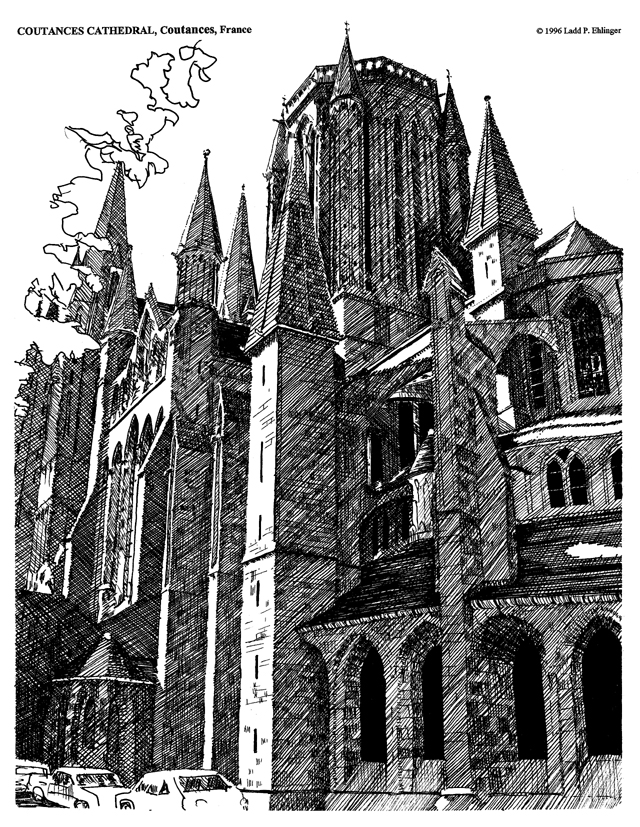
Projects Newsletters Personnel Contact

Coutances Cathedral is one of the purest examples of Norman Gothic in existence. This occurred because it was built over an extremely short period of time - 55 years (1220-75), and because the characteristics of Norman architecture are so strong to begin with. It also is one of the most consistent in style Gothic buildings because of the short construction period. Norman architecture, even in the vernacular, has many tall narrow proportioned elements, usually with tall pointed cone type roofs, all with a stark and sparsely decorated appearance. The Norman cathedrals that were in the Romanesque style such as Abbaye aux Hommes and Abbaye aux Dames, both at Caen, exhibit these characteristics as did the predecessor church at Coutances that burned.
The predecessor was designed by Geoffroy de Montbray, one of the prelate knights that Duke William (the Conqueror) had gathered around him before the invasion and battle of Hastings in
1066, completed the first nave in 1056. The footprint of the building as well as most of the remains from the fire were incorporated and transformed into a Gothic style building. The west front is framed by two soaring towers composed of multiple, narrow towers, with the flanking ones taller. The view in this edition's limited edition signed print by Ladd P. Ehlinger is of the south transept with the striking octagonal lantem on top of the crossing and a portion of the chevet on the east end with the flying buttresses that daringly leap over the double ambulatory.
Coutances is worth going out of your way to see. It occupies a hillock on the Cotentin peninsula and is the religious and judicial center. The town was originally a Roman settlement named Cosedia. It changed its name to Constantia in the 3C. This Roman name ultimately evolved into the French "Coutances" over the centuries.